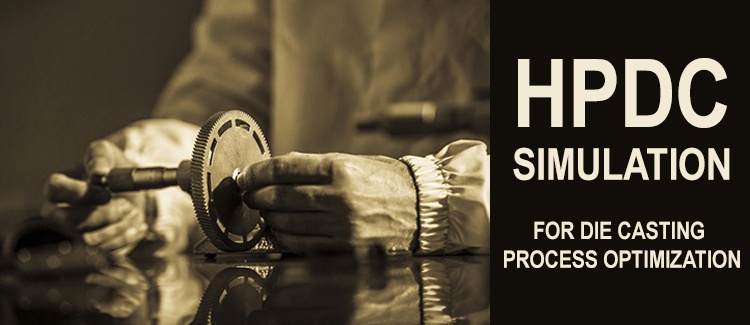As winner of numerous international awards, Bruschi Spa is known for its innovative approach in design and technology. We are glad to share our insights and experiences with the industry members.
HPDC simulation for die casting process optimization

In high pressure die casting industry both suppliers and customers are always looking for the best solutions in terms of part load, costs and times for development and manufacturing processes.
Being quality the top priority, HPDC simulation techniques are constantly innovating and new tools are developed in order to follow the trends.
Today, we are going to dive into the:
- Fundamental steps in HPDC simulation
and
- Simulation of the entire casting process
Quality of products and process efficiency depend on the precision of planning processes. The two crucial factors to secure their efficiency are:
- experiences from past projects and modelling
- HPDC simulation
With ‘modelling’ they refer to the casting process representation in simulation programs: filling, solidification, properties, formation of porosity and identification of best parameters and boundary conditions.
The most common problems and defects which can be prevented with HPDC simulation are: flowmarks, coldlaps and shrinkage cavities related to the filling phase, temperatures of the die and the casting solidification process.
The availability of simulation results and concrete data from the early stages of the collaboration between die-casters and customers is a very valuable asset which can prevent defects, save time in manufacturing process, and reduce empirical tests and material waste.
Fundamental steps in HPDC simulation:
- The geometry of the die - cooling and heating lines - is reproduced in a 3D-model
- The process parameters - shot curve, temperature of melt, thermal regulation, sequence of the casting process - are the inputs needed by the simulation programs which can also include automatic forecast and predefined process parameters.
- HPDC simulation programs’ results are graphics or videos that report the various phases of the casting process such as die filling, solidification, product properties and potential defects.
Simulation of the entire casting process
The casting filling process is perhaps the most critical one. Velocities parameters and the casting geometry can lead to turbulence and/or solidification issues.
The quantity of valuable data resulting from the simulation phase allows customers, die-caster designers and engineers to make huge improvements in the final product and to increase the processes cost-effectiveness.
In high pressure die casting the gating design is crucial and during HPDC simulation you need to take into consideration several features.
Reducing turbulences
To avoid air entrapment in the casting, turbulences reduction is a key component. The liquid flow needs to be calculated and directed to the cavities; the velocities need to be consistent.
A simulation of the die filling can provide with very useful data regarding all those possible issues, then the supplier and the customer can decide together whether the design is suitable or it needs any changing depending on the simulation analysis.
Casting parameters
The die filling is primarily determined by the defined shot parameters. The simulation in this case takes into consideration velocity, volume flow, exact timing and switching points.
Solidification phase
The solidification of the melt with its multiple metallurgical-physical phenomena must be deeply analysed with simulation programs and modelling studies. The casting properties are highly influenced by the melted metal ones. Therefore, to avoid shrinkage cavities during solidification and microstructure and/or porosity formation, you need to consider the metal volume contraction in the solidification phase and the casting wall thickness.
Porosity prediction
The tomography software offers a great additional value in HPDC simulation, because of its very precise results in identifying and localizing imperfections and defect, leading to a really accurate quality assurance.
Porosity Visualization
Simulating the solidification phase in a given casting gives access to very important data regarding the tracking of porosity formation.
Die Lifetime
During the casting cycle, the alloy high temperature and the high flow speed can lead to a significant die lifetime reduction. In this specific case, the purpose of the simulation is the analysis of die-soldering criterion, the surface melt temperature and solidification in order to identify opportunities for slowing down or eliminating erosion on an existing die.
A correct study of the different temperatures distribution can help balancing them among the mould.
HPDC simulation of the filling phase may therefore predict possible defects caused by lack of consistence in temperature or liquid flow, optimizing the entire production with positive effect on the final product in terms of aesthetics and efficiency and on the duration of die life, avoiding cavitation.
Bruschi offers to its customers a co-design partnership to identify every possible margine of improvement and suggest alternative solutions to maximize the performance and quality of the final product, reduce costs, and speed up the time to market.
Our technical staff is available to support your designers' inventiveness and to develop innovative and creative solutions together.

